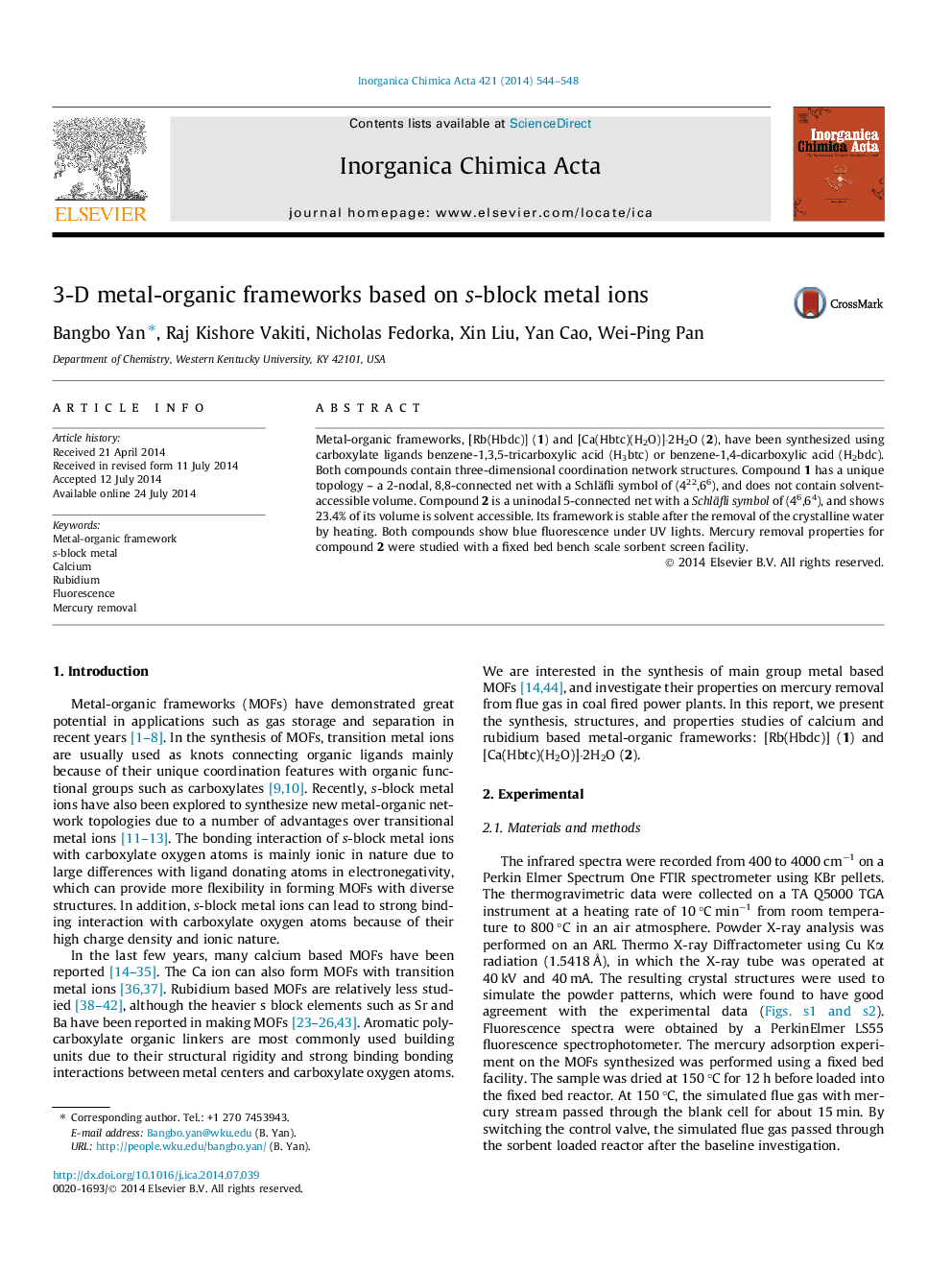| Article ID | Journal | Published Year | Pages | File Type |
|---|---|---|---|---|
| 1308155 | Inorganica Chimica Acta | 2014 | 5 Pages |
•Three-dimensional s-block metal-organic coordination polymers.•Mercury removal from simulated flue gas by the porous Ca polymer.•Blue fluorescence properties.
Metal-organic frameworks, [Rb(Hbdc)] (1) and [Ca(Hbtc)(H2O)]·2H2O (2), have been synthesized using carboxylate ligands benzene-1,3,5-tricarboxylic acid (H3btc) or benzene-1,4-dicarboxylic acid (H2bdc). Both compounds contain three-dimensional coordination network structures. Compound 1 has a unique topology – a 2-nodal, 8,8-connected net with a Schläfli symbol of (422,66), and does not contain solvent-accessible volume. Compound 2 is a uninodal 5-connected net with a Schläfli symbol of (46,64), and shows 23.4% of its volume is solvent accessible. Its framework is stable after the removal of the crystalline water by heating. Both compounds show blue fluorescence under UV lights. Mercury removal properties for compound 2 were studied with a fixed bed bench scale sorbent screen facility.
Graphical abstract3D metal-organic coordination polymers of calcium/rubidium organic carboxylates showing blue photoluminescence were presented.Figure optionsDownload full-size imageDownload as PowerPoint slide
